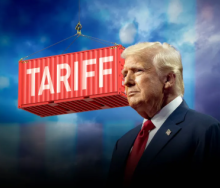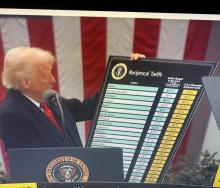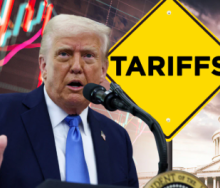While President Trump appears to have dialled back on his election promise to impose 60% tariffs on goods from China and 10-20% from the rest of the world – for now - trade analysts are examining the possible impact on rates through the lens of past experience.
On the day of Trump’s inauguration on Monday, he stated he was ‘thinking about’ introducing a 25% tariff on imports from Mexico and Canada on February 1.
He did not immediately go ahead with vows made during the election campaign, instead ordering a probe into ‘trade deficits and unfair trade practices and alleged currency manipulation by other countries’.
Data collated by trade analystXeneta shows the last time Trump ramped up tariffs on China imports during the trade war in 2018, average spot rates spiked more than 70% on the critical trade from China to the US West Coast.
“Current spot rates from China to the US West Coast stand at $5 104 per FEU,” says chief analyst Peter Sand. “This is 24% higher than 12 months ago, primarily due to the impact of conflict in the Red Sea. If rates increase by the same magnitude as they did back in 2018, the market would hit an all-time high, surpassing the previous record set during Covid-19.”
On the other hand, Sand believes the tariff regime may not turn out to be as harsh as feared, while the potential for a full-scale return of container ships to the Red Sea would see overcapacity flood the market and rates collapse.
This demonstrates the extreme ends of the scale of uncertainty shippers are facing in 2025. Previous rules on freight procurement no longer apply.
Freight procurement strategy cannot be based on political rhetoric, he warns. “We know tariffs on US imports are going to come, but we don’t know when, where, or what goods will be impacted.
“More and more shippers are using index-linked contracts to manage this unpredictability, whereby the rate paid tracks the market at agreed thresholds.
“For example, if freight rates rise due to Trump announcing tariffs against China, the rate the shipper pays increases at a pre-agreed threshold. On the other hand, if the recent ceasefire agreement in the Middle East sees a large-scale return of ships to the Red Sea and the market collapses, the rate the shipper pays will fall.”
In the short term, shippers could frontload imports ahead of tariffs – as some shippers did in 2024, initially in response to Red Sea disruption, and more recently to deal with the tariff threat. “But this costs money in terms of shipping goods at elevated freight rates, warehousing costs and bloated inventories tying up working capital – and you still don’t even know if the goods you are frontloading will be in the scope of the tariffs you are guarding against.
“Geopolitical risks, both known and those yet to emerge, will continue to cause carnage. You need a procurement strategy that is anchored by data and market intelligence so you can effectively manage supply chain risk and freight spend today, tomorrow, next month, next year and beyond.”













